– Heather Daniels: Good afternoon. It’s great to be back here in Tripp Commons. The University Roundtable has been in Tripp Commons for many years, and it’s great to be back here after a stint at Union South. Like to welcome you to the first University Roundtable of the 2019-2020 school year. My name is Heather Daniels, and I’m the Secretary of the Academic Staff here at UW-Madison. Thank you to our sponsors this year, the Secretary of the Academic Staff Office, Wisconsin Union, Office of Learning and Talent Development, and the Chancellor’s Office. Our Shared Future is the name of a plaque dedicated this summer that bears the seal of the University of Wisconsin-Madison and the great Ho-Chunk Nation. The plaque is meant to spark conversation and discussions about the land UW-Madison occupies and the people who have called this place home for thousands of years. Today’s roundtable is the beginning of that conversation. We are pleased to welcome Aaron Bird Bear.
Aaron is a registered member of the Mandan, Hidatsa, and Arikara Nation, and serves as the assistant dean for student diversity in the School of Education. He first came to campus in 2000. In addition to his day job, he regularly gives First Nations cultural landscape tours of campus, and was involved in the group that made the Our Shared Future plaque a reality. Please join me in welcoming Aaron Bird Bear. [audience applauding]
– Aaron: [speaking Ho-Chunk] Aaron Bird Bear [speaking Ho-Chunk]. [speaking Ojibwe] Aaron Bird Bear [speaking Ojibwe]. Bonjour, [speaking French]? [audience laughing] So for those of you who have been on a First Nation cultural landscape tour, realize we often begin with language. And I said, “It’s nice to be here, “my name is Aaron Bird Bear,” in the Ho-Chunk language, ’cause we’re in the ancestral land of the Ho-Chunk. Since you didn’t know the ancestral language, I was like, “Hmm, maybe they know the common language “of the Western Great Lakes, the trade language,” and that’s Anishinaabemowin, or the Ojibwe language. So I switched to the Ojibwe language to greet you, and that didn’t work.
And so I was like, “Maybe they’re these rascally new folks “in town that are all over this Western Great Lakes “called the French. ” We know the French were here for longer, I think just about as long as the United States has been here, by this point. We see it in the names of Racine, Eau Claire, Lac Butte des Morts, Prairie du Chien. All of the French would be upset with how we say Prairie du Chien. And so there was awhile, they did know French, well, they kind of, maybe knew French. So maybe these new people, these people who speak English who have entered the Western Great Lakes just in the most recent sliver of time here, so I just wanted to remind us about how we connect to one another, and how our cultures and languages connect us to this place and situate us within this world in some way. So I’m just thankful to be able to share a little bit of our campus story. I’m not a historian. I’m not an anthropologist. I’m someone who stitched together a compelling narrative of our campus, and how we can see the shifting relationship between our university and the First Nations all around us in some way.
And in me giving you this talk, or a First Nations cultural landscape tour, is the literal equivalent, as I am a member of the Mandan, Hidatsa, and Arikara Nations, the three affiliated tribes of the Fort Berthold Indian Reservation, which is 900 miles that way. So me giving you a tour of campus is the literal and cultural equivalent of a person from Barcelona giving you a tour of Rome. All right, so just really something to note. The Ho-Chunk are just an amazing people. Their language is one of the most important languages of this continent. They’re one of the only First Nations whose name is of their language itself, the Ho-Chungara, the “People of the Big Voice. ” And their language is the parent language of the entire Siouan language family, and so all the languages of the Plains, the Dakota, the Nakota, the Mandan, the Hidatsa, were all outgrowths in some linguistic way of the Ho-Chunk language, in the same way that French, Italian, Spanish, and Portuguese are outgrowths of Latin. So what an important language, and what a specialness about this particular place that we call home. So when I tell some Ho-Chunk elders that I’m Mandan and Hidatsa, they’re like, “Yeah, you’re Ho-Chunk. ” I’m like, “Maybe a few thousand years ago.” [audience laughing] Before the band broke up. [audience laughing]
So my colleague Omar Poler is not here today, and I’d hoped just to be the hype man, the Flavor Flav to his Chuck D. [audience laughing] Omar Poler is an amazing scholar and researcher and leader, and he recently won a national award for his culture-keeping powers and talents, as he helps tribes think about their own tribal collections and how they can share their stories among their own communities and with the public. So Omar can’t be here today, but he sends his regards to everyone. A quick thought exercise. At your tables, I’ll give you a couple of minutes, just a really brief time, you’re invited to welcome the newest class of students to campus, and what three concepts would you come up with to introduce to our community for teaching and learning purposes, and that’s me, doing exactly that. They asked me to speak to the freshmen, our new class of first year students at the freshmen convocation for a few years, and so I thought, what are the most important messages we need to transmit to our newest community members? So I want you to work at your tables briefly, just for a couple of minutes talking with one another, of what three concepts would you want to introduce to our community about this place? So please, have a little conversation with your peers. [audience chattering] Are there any ideas that people kinda came up with that are just right there that you hope our community knows in some way as they join our community, and become part of this institution in some way? Is there any ideas out there people would like to share briefly, any immediate burning?
– Audience Member: Well, we’re a shared governance; we’re governed by shared governance entities, which the why for students is there’s an opportunity for them to have a say in how things go in their participation.
– All right, so shared governance. The Associated Students of Madison is an important part of our academic staff and our faculty senate and how we make decisions collectively as a community. So shared governance would be an important thing to talk to them about in some way. Any other ideas out there people want to share?
– Audience Member: The Wisconsin Idea?
– All right, the Wisconsin Idea. We’re trying to, the beneficent influence of the institution on every home in the state, we’re trying to enhance the well-being of others in some way. So what a wonderful idea that kind of guides our institution in some way. And there’s one more hand back there?
– Audience Member: Sifting and winnowing.
– Sifting and winnowing! So the wonderful sense of academic freedom that we have the– it’s really important for the advancing our society and research to be able to investigate whatever topic it might be, however uncomfortable it might make some people. That’s how we’re going to advance ourselves and our society, and indeed, when Chancellor Wiley, an old chancellor of ours, said he used to go in front of national forums of other university presidents and when they announced Wisconsin, they would, we would get a standing ovation because of the academic freedom and the Wisconsin Idea, these two principles that are so revered in higher education, that we’ve championed for so long as an institution. Wonderful stuff. So shared governance, Wisconsin Idea, academic freedom in the classroom, and I would like, I gotta keep moving on, but I appreciate the sentiment.
– Audience Member: Lifelong learning.
– Lifelong learning. Yeah, we gotta keep learning as we go forward. So here’s what we said. We said, “How long have humans lived here? “How long have peoples actually been “#chillin on this lakeshore?” [audience laughing] “How long have people been kickin’ it with one another, “gettin’ in each other’s business, just being humans? “And on whose ancestral lands do we live?” I think the Our Shared Future heritage marker is trying to remind us that we’re in the Ho-Chunk’s ancestral lands, and they have other words and names for this place, Dejope, and the lake that this building is next to would be called Wonkshekhomikla in their language. They have entirely different kind of understanding and cultural connection to this place; whose ancestral lands are we in? And who are our First Nations neighbors today? Who are the tribal nations that are around us? And obviously, we’re in the ancestral lands of the Ho-Chunk, and the Ho-Chunk are still here. Often you might be in the ancestral lands of one First Nation, but they, through history and all sorts of shaping powers, have been removed from that space and might be somewhere else. And we’re fortunate the Ho-Chunk are still here despite an incredible story of perseverance and resilience to remain in this space. We also have the Forest County Potawatomi neighbors, who are just down the roads a little bit. So our neighbors would be the Ho-Chunk Nation and the Forest County Potawatomi Nation. So we thought if we extended that story a little further back about joining our community, it would just kind of help us understand and fulfill some of the expectations and learning goals we have for students.
So the framework we kinda talk about today for working with Native American communities are the concepts of respect, revitalization, and reconciliation. Respect is kind of shown in this Our Shared Future, that we’re starting to acknowledge some of the complex shared past that we have, some of the historic transgressions that this institution has been party to in relation to First Nations. In order to get to reconciliation, you first have to have truth, and so we’re starting to do a little truth-telling as an institution, for us to gain a deeper understanding of this space, and so this represents a really powerful component of truth telling, the incredible complex, kind of colonization effort that happened here, that failed, with the Ho-Chunk resistance to it, so just a really important thing of respect that we would know the shared history, that we’d all be informed as campus community members in some way of this shared history that we have, and that hopefully, we’d be invested in the revitalization of Indigenous cultures. It’s hard to imagine, but not that long ago, Native American language and culture was criminalized under U. S. law. In fact, the policies of assimilation and termination, which were designed to eradicate Native American language and culture from planet Earth, did not officially end until 1975, when I was in elementary school. So you’re looking at the first generation of recovery and renewal, after almost a hundred-year attempt to eradicate all of Native American language and culture from planet Earth through child-family separation. So my grandparents were forced to be removed from their families and put into off-reservation boarding schools in an attempt to eradicate our languages and cultures. So revitalization, how are we contributing to revitalization now that we understand Indigenous knowledge and Indigenous languages? It’s really important for us to understand the crises that we’re facing collectively as a human species on this planet.
The Ojibwe assert that the seventh fire has been lit in their seven fire prophecy, and now we’re at that fork in the road right now, and it’s up to us to make a decision of what we’re going to do going forward as a human species with the signaling of our planet responding in some ways to the influence we’ve had for all living beings on this planet. So just really important, respect and revitalization and reconciliation is a framework for how we might gain a deeper understanding of this space. So conscious cultural connection to place, how we understand ourselves in this place, how we are connected to it. So we’re gonna kinda get a feel for conscious cultural connection to place, and often, conscious cultural connection to place is shaped by how long you’ve been there, how long you’ve been doing your business, enacting your ways of being, how you’re encountering the environment around you and understanding that environment, and it kind of shapes your language and culture in some way. So we think about the Menominee. They’ve been here in the Western Great Lakes for 10,000 years and counting. They’ve been here a long time. And they speak about how their language doesn’t work so well now that they live indoors with mostly sedentary lifestyles, that their language was about being engaged with the forest around them, and that now they lead such different lives, their language functions a little differently. “How do we use this language now that we don’t live “in the same ways that our ancestors lived?” So we can kinda see conscious cultural connection to place reflected in language, reflected in culture. So we’re gonna kinda take a gander, we’re gonna take a little look at our conscious cultural connection to place as a university community.
So once again, you’re gonna work with your tablemates, your table friends, and take a couple minutes to define two words. No digital devices, it’s only your collective knowledge together. What do the two words Wisconsin and Mendota mean? So the words Wisconsin and Mendota, what do those words mean? We learned that the Ho-Chunk word for this lake was Wonkshekhomikla, and that this particular town, they called Dejope. So they have their own words for this place. What does Wisconsin and Mendota mean? [audience chattering] All right, all right. In the interest of time, since we all live here, we should have knocked those out right away, right? [audience chuckling] We see these bodies of water, and it’s on our driver’s license and our cars and we probably tell other people we’re from this place, we’re Wisconsinites, or something. So I won’t ask the crowd, but I will kind of move through this a second. But the name Wisconsin, the official line says, two gentlemen could not read each other’s handwriting. So the state historical website says, a Miami language word. So the Miami language is kinda on the eastern shore of Lake Michigan, the Miami peoples.
We have the Miami University of Ohio reminding us about that. The Miami people language, we’re Meskousing, you’re going to Meskousing. And curlicue, beautiful cursive writing, one guy thinks the M is an O-U in the French language, so Meskousing becomes Ouisconsin, which we somehow anglicized to “Wiscansin. ” [audience laughing] That’s how we work, right? That’s how we roll. So that’s the official story of how we got our state name, and the Meskousing, word like “water that runs through a red place,” which is presumably the Wisconsin Dells, and so the Wisconsin River is the main north-south highway of the state, it’ll take you all the way up the state, so what an important navigable body of water to know. So why it would be such a term of reference to this place. So that’s the official academic line about the nature of our name. The Menominee Nation, Gary Besaw, the president of the Menominee Nation, a couple years ago at the State of the Tribes Address said that Wisconsin was a derivation of a Menominee language word for “a beautiful place to live. ” So it’s still contested. What does this word mean? Is it truly one of a, kind of a derivation, a mutation of an Indigenous language word, kinda Indianish is what I call that, or is it this two gentlemen can’t read each other’s handwriting back in the day? And so I think we’re still trying to figure out what this name is and how we embody it in some way.
So I call that quintessentially American. Just gonna make up something and we’re gonna go with it. [audience laughing] So, and similarly, Lake Mendota, three gentlemen have a hand in naming the lakes. A gentleman named Frank Hudson, Governor Farwell, and Lyman Draper. Governor Farwell is a land speculator, and he needs to sell this land to entice settlement into this new idea called Madison, that’s kind of a new place. And Fourth, Third, Second, and First Lake is just not sexy enough for a brochure. So he has to come up with new names to print 10,000 brochures to send back East to entice settlement, and so they kinda start with this idea, they think Mendota is an Anishinaabemowin word, an Ojibwe language word. It’s kind of sort of not really, it’s more Indianish. And so based on that word, they then make three other words that rhyme with it, they’re all three syllables. Monona, Mendota, Waubesa, Kegonsa.
So they’re gibberish, and that’s how we get those names for an expedient purpose of brochures to sell land in this region. So our conscious cultural connection to place and the names and how we understand the environment around us, and more importantly, what kind of education model do we have as a settler colonial society that doesn’t ask us to interrogate the names of things? That we don’t expect names to have meaning, so we never actually think even what this name is or why it came to be, or how it references our connection to that place in some way. So it’s just an amazing component of being a settler colonial society, where we just don’t go deep. We just accept a name as a name and don’t really try to understand how that name connects us to this place in some way. So just a really important point. So settler colonialism, right, and our conscious cultural connection to place kinda talks about destroying, displacing, erasing peoples so that people can claim these spaces for themselves. So the idea of settler colonialism is not going to be partnering with the Native nations as the French did before the United States arrived. The French intermarried into the Indigenous peoples of the Great Lakes, creating an entire new class of people in Canada called the Metis in the process. And we can kinda see that incredible French and Indian relationships with all the French surnames of the people in the Ojibwe and Oneida communities of the North, where Fourchette and Skenandore and Cornelius are just really powerful family names in the North, and they all come from this amazing integration of French and Indian peoples here in the Great Lakes. But the United States arrives, and they’re not having that same plan.
There’s not the same plan to integrate. It’s a whole different idea of colonization and settler colonialism to claim this space for the United States, and an entire new society. And mostly people are thinking of Native Americans as disappearing, or absent, or not true actors within the society. And we can see reflections of settler colonialism in the pipe of peace ceremony. So the top photo for 40 years, students at this campus dressed up as Native Americans and acted out, in culturally appropriation ways, a Native American pageant for themselves the night before graduation. They’d have a pipe, and they would say incredibly amazing and crazy things that we look at today and say, “Nobody would wanna do that today “for fear of being caught on film, “and seeing that transmitted to someone else. ” But that’s just who we were as a society at that time. We see a photo from 1924, a UW homecoming, and someone’s put up what they claim to be a wigwam that is not a wigwam. A wigwam is a geodesic dome. That is more a teepee-like structure.
But we can kinda see this kinda haphazard representations of Native Americans in inauthentic ways, and that’s the settler colonialism idea, of not a true respect of the Indigenous cultures, but a thin recognition of them in some way. And the pipe of peace is actually in this room, and so I can see, it’s right above me, it’s painted on the ceiling, so it’s the official motto and symbol of the Memorial Union, the pipe of peace itself. There’s a tremendous amount of Native American imagery in this building, and murals on the upper floors, murals on the second floor main hallway, all the brass doors when you enter have the pipe of peace in the center of the brass door when you go in and out of the Union. So we can see our campus community thinking about Native Americans in the early 20th century, but more creating mascots and stereotypes, inaccurate and inauthentic representations of Native Americans, and that settler colonialism of its era when we were trying to eradicate Native American language and culture at that time. And we can see the vision of Wisconsin itself as a state in the territorial seal that became the first state seal from 1848 to 1849, and as an Indigenous person, I’m just always shocked and amazed. I’m like, “How did this incredible Latin language “get plastered all over Turtle Island? “Where did this language come from? “I don’t think people even speak it anymore. ” But it’s just emblazoned upon building after building and even our monetary currency has Latin reflected on it. And so the Great Seal of the Territory of Wisconsin is a graphic novel, showing us the incredible terraforming of the land of Wisconsin. We see displacement of Indigenous peoples in it. It’s telling us exactly what the vision of Wisconsin is.
So on our left side, we can see an Indigenous, yeah, the left side of the image, you can see an Indigenous person represented with a bow and a feather in their head, leaving via steamship that’s gonna take them away. We see European and European Americans coming in and transforming the land in the form of the plow, and the motto of the territory of Wisconsin and the first state seal is “civilization succeeds barbarism. ” That’s the official motto for the creation of Wisconsin. So it’s a pure white supremacy idea. We’re gonna create a white space, cleared of Indigenous inhabitants. That is the vision for the state of Wisconsin, and it’s why we think of the great inequities we see in education, health, and law for different communities is because we’re still trying to untangle our white supremacy roots as a state. And we can see it so clearly codified in the vision for the creation of Wisconsin in the territorial seal and the state seal that comes after it. And so, in what ways does our settler colonial education model obscure the incredible humanity of this space in some way? So in the yellowish and the pink and the orange section, we can ignore the purple section, that orange, pinkish, and orange section are the 10 million acres of the Ho-Chunk Nation as recognized through treaty. So we can kinda see the incredible villages that are all throughout the ancestral lands of the Ho-Chunk. We can see the villages of Old Turtle, Dejope, and Broken Arm, that are now the cities of Middleton, Madison, and Monona.
We built our civic life on top of the Ho-Chunk village life, and it’s a lot easier to move into a place that someone has spent thousands of years cultivating into a good place to live. And the settler colonial model’s like, “We moved into a wilderness, “there was nothing there!” People have been here a thousand years, really transforming this place in powerful ways. And so it’s just kind of what do we lose and we do not see in the process? And most people don’t even know these really powerful stories of conflict and contest in this space. The dates on the map correspond with the treaty dates. So 1829 is the treaty that the Ho-Chunk lose a few million acres in the South Central Wisconsin. September 15th, 1832, which is referenced in the Our Shared Future heritage marker, is the treaty that allows all of us as U. S. citizens to be here right now. It is not a dusty and stale treaty; it is a lived treaty by you every day as you walk around this town, because that September 15th, 1832 treaty allows us to be here as U. S.
citizens, to live in the ancestral land of the Ho-Chunk. And so that’s arguably the most important document for every living species here, plant and animal, as we see an incredible transformation of our relationship to place and to land with the signing of that treaty. And then 1837 is a treaty that shortly follows. So in quick order, the Ho-Chunk cede away their ancestral land, and they do it under incredible duress. So in 1827, there’s the Winnebago War. Thousands of people move into Ho-Chunk lands illegally to mine lead, zinc, and galena. The Ho-Chunk have an avid mining economy themselves, but people realize there’s a resource there and thousands and thousands of people illegally move into Ho-Chunk lands and begin illegally mining those lands. And those people would go into the mines, and they were mining so quickly that they didn’t bother to build houses, and they kind of lived like a certain animal. Do we know what that animal might be?
– Audience: The badger.
– The badger. That’s right. So the badger, to the Ho-Chunk, in many ways, is a symbol of their dispossession. So 1829, after the Winnebago War of 1827, when the Ho-Chunk pushed back against these thousands of illegal squatters coming into their land to take their resource, they get in a conflict with the United States. The United States wins that conflict, and as a concession, forces them to cede the mining territory, so that 1829 strip of land is an outcome of the 1827 Winnebago War, where thousands of illegal squatters were coming onto Ho-Chunk land, and the Ho-Chunk pushed back, and the United States used it as a land grab in many ways. 1832, they signed a treaty under duress. Six weeks before the signing of the September 15th, 1832 treaty, a thousand Indigenous people are slaughtered on the banks of the Mississippi River here in Wisconsin, called the Battle of Bad Axe. It is Black Hawk and the Sauk people’s escape from ethnic cleansing in Illinois. They come through southern Wisconsin and they’re met on the Mississippi River by Navy gunboats, and a thousand people are massacred on the banks. So six weeks before the Ho-Chunk sign the 1832 treaty, there’s incredible violence and atrocity here in the state, kind of signaling to the Ho-Chunk what’s coming their way if they’re not going to get in line with the United States’ wishes. So in the 1837 treaty that we see, that is entirely fraudulent by any concern of legal theory or law today.
So we can see, under duress, the Ho-Chunk lose their ancestral homeland, at least in legal title, in a period of colonization here in the Western Great Lakes. So what an important story to understand. And the Our Shared Future is trying to hint a little bit about this amazing complex shared history that we have with the Ho-Chunk in some way. And the students themselves are getting #woke. They’re starting to ask for hard truths. They wanna understand the story of this space. In 2016, shared governance, the Associated Students of Madison passed a resolution asking for the university to recognize Indigenous Peoples’ Day, which we never did. Luckily, Executive Order 50 was passed by Governor Evers last week, where Indigenous Peoples’ Day is now recognized by the state, [audience applauding] as the second Monday every year. The students wanted the Native nations’ flags to be represented on campus somewhere. And we had actually asked for that in the design of Dejope Residence Hall, but the university, for whatever reason, didn’t wanna go in that direction at that time.
And the students also wanted to interrogate President Lincoln and his role in the Dakota 38. That’s the largest mass execution in U. S. history, where 38 Dakota, Santee, Sioux, and Ho-Chunk people were simultaneously hung on a gallows in what is now Mankato, Minnesota, an outcome of the 1862 Dakota War. So to President Lincoln, as president during the Indian Wars of the Great Lakes, it’s not like he’s in ancient history, but he’s part of the Indian Wars themselves, and he’s president during the ethnic cleansing campaigns against the Ho-Chunk here in Wisconsin. So Native Americans generally don’t sit on Lincoln’s lap, because to many in the Ho-Chunk, he’s a symbol of ethnic cleansing and one of the most important cultural centers they have here in Dejope. So it’s a really complicated symbol to have as an institution. And we have that statue for all sorts of weird reasons. We say we have it for land grants, but that is not true. The reason we got the, they had a deal with a gentleman named Richard Lloyd Jones, who owned the Wisconsin State Journal.
And he was a known race baiter and known for his ultra-racist positions on political issues, and he steered the Lincoln statue to our institution. So we now say land grant universities, but that’s not the reason why we have it. We project a myth about land grants on to the reasons why we have Lincoln as a statue. So the students are just asking for hard truths. They want to know the story of this place. They want to know a more authentic and complete story of this place in some way. And so following up on that, we were charged to create campus signage for the university. We wanted to make signs that were developed to advance multiple needs, including the needs of Wisconsin’s sovereign Native nations to have their presence and heritage recognized and honored. And the university imagined this was gonna take a few months. They thought, “Knock ’em out, we’ve got the signs around, “we’ll be good.
” And we needed to really ask the Ho-Chunk Nation, “What stories should we tell?” And the Ho-Chunk are going through their own process of discovery of what to share with the public. Their traditional ways of being say that most of the information stays within their community, that they don’t, are just starting to think, as a First Nation today, what they should share with non-Ho-Chunk people. And there’s, like in many things, a generational divide on how much should be shared and what should be shared. And so it’s been an exciting process to support the Ho-Chunk as they go through this discovery of information and collective knowledge building about this particular place that we’re all finding ourselves in today. And so it’s really been rewarding and exciting to support that. And so here we are, two years into this. We have one heritage marker designed at this time, which we consider a success. The university is like, “Must we go at this glacial pace?” Yes we do. If we want to get this right, and the kind of process we need to adhere to to understand what kind of important concepts would the Ho-Chunk want us to know about this particular space. And so we, after developing this first sign, which our first draft was rejected by the Ho-Chunk Heritage Division as being too problematic; they couldn’t translate it into Ho-Chunk by any means.
We recognized that we needed to have a different process for developing messaging of this campus, so we asked the Ho-Chunk, “If you were leading this, “how would you do this?” They’re like, “Well, it would be all-day events “or half-day events, there would always be food, “because that’s our way of being. ” So I said, “Let’s start doing it that way. “Let’s follow your traditions “for how you would organize people “to think about sharing something in some way. ” And so through this two year process, these major themes have emerged about what we’re gonna learn about this place in some way, and this has been being led by Omar Poler, who’s just an exceptional researcher and scholar who led the tribal library’s archives and museums group here in the Information School for some time, and that’s just helping tribal nations think about their own collections, their own archives, how they manage them, what stories are they gonna tell themselves within their own communities, what stories they wanna share with the public. And so Omar’s amazing work with the Ho-Chunk Dejope Community History Project has arrived us to these basic ideas of– They first wanted to know the forced removal history, and Our Shared Future heritage marker is trying to help us understand that forced removal history in some way. That love and respect are the central concepts that infuse every part of Ho-Chunk life, and that we should probably understand how love and respect function within the Ho-Chunk Nation in some way. That water is a really significant component of their worldview, and the way they view rivers, lakes, and springs is far different than how we view them ourselves. And so they were wanting us to understand their views of water and their connection to water as a people. They want to remind us that culture informs our relationships to place. One of the ways we can see that, I think we’ve changed the name of this office once along the way.
It’s now called the Department of Natural Resources, how we as a society think about the Department of Natural Resources. Indigenous scholars should say, “It should be the Department of Earthly Gifts. ” [audience murmuring] If it’s a gift, how would you treat it? Well, if it’s a gift, what would you think of it? And so, versus an extractive capitalist enterprise, the Department of Natural Resources is focusing on the commodification of living beings in the form of plants and animals, versus the Department of Earthly Gifts that might view such a world in a different way. Cultural humility, how our relationships to place, we need to practice cultural humility as a people. We think about when Native Americans have made compacts with nature. The Menominee asserted they made a compact with nature that in order to for them to harvest living beings, be it plant or animal, to sustain themselves as a people, they made a promise to ensure the environment would be good for every living being, plant and animal, and that their compact with nature was to ensure that every single living species had a quality of life that they were having as Menominee people. And similarly, the Ho-Chunk have incredible reverence for all life in some way. And so what kind of cultural humility should we practice in our relationship to the planet in some way, shape or form? And then they describe a power of this place, that there’s an incredible transformational power in this particular location, and that maybe we could start understanding in some ways the incredible power of this place. And I see it manifested in the University of Wisconsin-Madison. I mentioned earlier these ideas of academic freedom, someone shared with us, the Wisconsin Idea, that these are revered principles and values for higher education, and they’ve been transforming higher education in their own ways as really important guiding philosophies for how we operate as a university community.
I think of the transformational power of this place and how we embody that transformational power as a university community in some way. So to keep going forward, we have oursharedfuture. wisc. edu. We have an incredible opportunity in front of us for the next 18 months to think about how we can teach about this place in some way. And so the vice provost of teaching and learning has afforded us some resources for people who want to apply and host the Our Shared Future heritage marker and teach about it in some way. There is an application at the Our Shared Future website where you can post a particular idea and hosting of this particular marker. How would you wanna teach your respective community in the ways that make sense for your discipline, whether it be science, the humanities, the social sciences, engineering, health. What would make most sense for you to teach about this place through your own respective disciplines? And so the vice provost of teaching and learning has generously afforded us these resources to think about how we can teach. So we highly encourage everyone to think about submitting proposals and hosting this heritage marker within your particular school or college program or department, and think about how you can teach about it in some way to your university community.
And that’s following through on the commitments. The Ho-Chunk Nation president had said, he’s hoping that this heritage marker is a spark, a spark for us to know more about this place in some way. And so we’re hoping that this type of activity, we usually incentivize people through the idea of grants to do some new academic activity together, and so maybe that’s a way for us to understand this place in a new way. So we encourage you to do that, and here we can see the photo of the entire Ho-Chunk Nation legislature came on June 18th of this year for the installation of the heritage marker, prior to Bascom Hill going under construction. So it was wonderful that the Ho-Chunk Nation came here, but they did remind us that a heritage marker in and of itself is not a commitment. What does this marker compel us to do? Land acknowledgment statements or this heritage marker, if we allow them to be hollow and unfulfilled messages, they become the mascots of the 21st century. They become a really thin idea of saying, “Oh, we covered that topic, we’ve said something,” but we didn’t really embrace the message of that in some way, it didn’t compel us to act and respond to it in some way, and so we’re hoping that we can fulfill the commitments we wanna do for the Ho-Chunk community is that we all understand this place in some deeper way as a university community, and that would be the first thing that we could do to honor the messaging and their visit and connection to us as a university community. And then we had a wonderful speaker this year, Ho-Chunk speaker Samantha Skenandore opened the Distinguished Lecture series, and it’s the first time, we got guidance as a community to engage this incredible effigy mound landscape around us. We have these incredible cultural expressions that were built between 2,500 and 1,000 years ago that showcase the people’s connection to this space, and she was encouraging us to go engage the incredible archeological sites of our campus, to go to them, to reflect at them, and to think about our relationship to this place in some way, and as the Ho-Chunk describe it, as a sacred place to them. Both President Cleveland and Samantha Skenandore have described Dejope and greater ancestral Ho-Chunk homeland as sacred to them.
And so we don’t necessarily understand what that means as non-Ho-Chunk, but what I hope, through our continued relationship building with them, that we learn in some way the sacredness through which they view this place. One little quick down memory lane, humans that lived here 12,000 years, the triangles represent human activity 12,000 years ago when it was one gigantic lake, not four lakes, after the last ice age, the water levels are still a little high, the isthmus is a series of islands in the middle. The smiley face is us, just so you know, if you’re having trouble. [audience chuckling] The isthmus goes between Lake Monona and Lake Mendota, it’s a series of islands at this time, and we can see where humans were engaging in their activities as human beings around this giant lake all that time ago. So if you wonder why sections of Madison are flooding from time to time, we can get a sense of the lowlands that they’re built on. Similarly, the Dividing Ridge used to be the most significant feature of this town. It was a massive earthen wall formed by the last ice age, a runoff area of this glacier, and it was eight stories tall and half a mile long. It was just this massive wall that runs from where Park Street meets Olin Drive, and it runs toward our hospitals, toward the zoo. And so we can see that represented here on the Google map on the bottom part where it’s situated on this tail, where the Dividing Ridge used to be, and we can see it drawn on the top diagram. And on top of it were 22 different conical, linear, and effigy mounds built on top of the Dividing Ridge.
We tore down the entire Dividing Ridge to fill in the wetlands and marshes of downtown Madison. So most of the isthmus, a good portion of the isthmus are landfill. The entire University Hospital is built on landfill. This used to be such an incredible wetlands and marshland area, but we’ve done a tremendous amount of terraforming to create the city of Madison. So for Ho-Chunk, maybe our stories, our ways of being, carry these places in some way of how we understood this place, how we connected to the space. And so if we don’t recognize today how much change has happened here in such a short order of time, the Dividing Ridge reminds us of just how powerful of change has happened in this space. The most significant geological landform of this space has been eradicated in a very short period of time. So to just remind us of that. And that, we’re most likely the most archeological-rich university of any in the United States. So there are 12,000 years of humanity, with all of these amazing conical, linear, and effigy mound expressions in this space.
It’s something that we are thinking about, “How do we teach and learn?” We’ve only had this knowledge, at least in a form that we accept as peer-reviewed, valid knowledge, since the year 2000 when Indian Mounds of Wisconsin was published by Robert Birmingham and Leslie Eisenberg, and had been updated with, Amy Rosebrough has contributed to the second edition. Spirits of the Earth, another book by Robert Birmingham, the 2005 archeological survey of campus, and so we all just have a brand new understanding of this space through research and study and a methodology that we accept as a university community. And it’s this exciting story we’re learning to share, and we need to partner with the Ho-Chunk Nation and the other First Nations to tell this story more accurately about what this space represents to us today. And for those of you who don’t know, if you’ve never visited them, we have these wonderful archeological sites. We have two nationally registered historic sites on campus that are Indigenous landmarks. One is the double-tailed water spirit and thunderbird effigy on Observatory Hill, and we see the double-tailed water spirit emerging from the snow. We can see Agriculture Hall, we can see the representation of those two effigy mounds that are built into the floor of Dejope Residence Hall. That was named by the Ho-Chunk. We see the bent winged goose next to Dejope Residence Hall, and we can see the system of bent wing geese that used to cover the Four Lakes area, these incredible cultural expressions, these burial sites created by the ancestors of the Ho-Chunk. And so the bent wing goose is the signature effigy of the Four Lakes.
Of the 20,000 of these conical, linear, and effigy mounds built in what is now Wisconsin, these are the only representations of bent wing goose in that entire system of 20,000 earthworks. So what a very special and significant cultural representation it is, and since we have one on our campus, we’ve elevated it to a nationally registered historic site, along with the double-tailed water spirit. There are many different water spirit representations around these lakes, but there’s, the only one of its type, the double-tailed water spirit, is found on our campus. And so it’s thought to be a unique cultural expression among 20,000 of these cultural expressions, and so we wanna protect that and steward that in some way. So just really special sites. If you’ve got a flavor for the isthmus in 1836, here’s a drawing of the isthmus. It’s a highly impressionistic drawing by an early survey crew, but you can see the depth of human development of all of these amazing landforms and earthworks that humans created over time. So the left side of the map is basically Wisconsin Avenue, running from the Capitol to the Edgewater Hotel. That is the isthmus running along the page. We can see the river on the right, which would be the now straightened Yahara Cut, the Yahara River that we’ve kind of straightened out.
Third Lake represents Lake Monona. And so we’re seeing all these incredible leveled areas and these massive 300-foot earthen walls that people have built as burial sites and all this, the tremendous amount of remembrance of ancestors that has happened in this space. So we are in what should arguably be a United Nations Educational Scientific and Cultural Organization World Heritage Site, with the uniqueness of this culture that’s expressed in this space. And indeed, faculty from Edgewood College are beginning an exploration of registering this town as a UNESCO World Heritage Site, in partnership with the Ho-Chunk Nation. That process doesn’t take long, just about 15 to 20 years. [audience laughing] So it’s just begun, this process of thinking about how special, culturally and historically, this place represents for humans here in the Western Great Lakes. And so here we can see the entire breadth of this culture being expressed in southern Wisconsin. The darker the gray, the more effigy mound, conical, linear mounds that you’ll find in those spots. We have over 1,200 here in greater Madison. Similarly, down where the Wisconsin River meets the Mississippi River, we see another heavy area of development.
So we can get a sense of that. And each little dark dot on the map to the right showcases where you’ll find a grouping of these archeological sites around the Four Lakes. So what a special and incredibly rich place to teach about in some way. And just that colonial veneer, so we looked at a timeline of 12,000 years to present. We are just the last 1. 5% of that story. 1848 forward is the last 1. 5%. 98. 5% of the humanity of this space is in a language other than English, in a way of being different from the way of being of our own, and it’s just an incredible, compelling story to tell.
In fact, the effigy mound and conical mounds are even, just the last 25% of that story. There’s 75% of the human story before the Mound Builders even began in this space, and so we just have a really rich story to tell as an institutional community. We have the knowledge today of the ancestral lands of the First Nations of the Western Great Lakes. If you’ve never been to theways. org, that this incredible educator named Finn Ryan developed these amazing vignettes in partnership with the First Nations of Wisconsin and created this map for us to kinda understand whose ancestral lands we’re in. That first question I asked us to think about, about three important concepts we might know. So we can see we’re in the Ho-Chunk’s ancestral land, with the Potawatomi being our neighbors and the Menominee and the Ojibwe Nations to the north. And yet, somehow in the Wisconsin Idea, if we look to that guiding principle and we look at that book from 1914, the chapter called “The Wisconsin Idea: The Soil,” it says, “Wisconsin is fundamentally a German state. ” [audience laughing] I’m like, “A German state?” I mean, how did we get there? But I guess in terms of the sense of U. S.
statehood. We kind of think about the populations coming in, and they “brought with them as high ideals “as any people who came to America. ” But we’d have to practice some cultural humility to see beyond the colonial veneer of this establishment of this idea of displacing and erasing the Indigenous population in some way, and we’d have to think about quieting our own worldviews to think about understanding the equally valid worldviews of this place that other peoples, such as the Ho-Chunk, the Potawatomi, the Menominee, the Oneida, the Stockbridge-Munsee, all these different groups would carry for us to understand in some way. We’re practicing cultural humility as an institution. We created Dejope Residence Hall in partnership with the Ho-Chunk Nation, trying to understand and tell the story of 12,000 years. We learned a lot through this process. It was very challenging for the Ho-Chunk and for us. The Ho-Chunk gave us the name Wonkshekhomikla to name this, initially, as the name for this building, to which we said, “Too hard. ” A place of learning can’t learn something? Is that really us? We can’t learn something? And so the Ho-Chunk responded with Dejope Hall. But if you look at the plaque in the building, it says Lakeshore Residence Hall.
So even when it opened, it had a holder name because we as a community had turned down their first gift, the name of Wonkshekhomikla because we felt it was a little challenging for us to learn in some way. We ended up with Dejope. We give the hall a thumbs-up as a university, the Ho-Chunk probably gives it a thumb sideways a little bit because we didn’t take their first gift that would have connected us to the lake and their view of the lake and their worldview in some way a little more than just the name of the village of Dejope that used to be here on the isthmus. Practicing our cultural humility, we had Representative David Greendeer speak at convocation and share his perspective as a Ho-Chunk person, and this took a lot of courage. I did the convocation for five years. I’m a known commodity. I’m not gonna color outside the lines, and so the university took the courageous step to inviting the voices of the First Nations themselves, in this very big event welcoming students to our campus. We invited the presidents of the First Nations of Wisconsin to join us. The first time in 167 years, as an institution, that we thought about inviting tribal leadership, specifically for our long-term strategic relationships with them, and so we’re just beginning this as a university community. And we’re practicing a lot of cultural humility in this process of how to establish these long-term relationships with these tribal leaders.
And that we’re learning about the forced removal history of the Ho-Chunk, and that really, a way to understand this forced removal history of almost 40 years of six military campaigns to remove the Ho-Chunk from Wisconsin, that’s one of the most incredible stories of love and resilience. It’s a love of this place that is so great that despite 40 years and 6 military campaigns against the Ho-Chunk, they would not be removed from this place. That is just an incredible story of love and resilience as the Ho-Chunk demonstrate their connection to this space. And it’s a little bit of the reason why we don’t understand this space better. We still have to heal our relationship after this great disturbance and this great violence that was enacted to the Ho-Chunk Nation in some way. And we have to reconcile our role in that. It was not unique to the Ho-Chunk. The entire continent goes through an Indian Removal Act and ethnic cleansing of the continent, and so we see the general diagram at the top, but the bottom really shows us the outcome. The darker the green means the more Native Americans in that county, and so we can kind of see the outcomes of the Indigenous Removal Act, we have the ethnic cleansing of the eastern half of the continent as people are deposited to Indian Territory into what becomes Oklahoma. It impacts the Ho-Chunk and the Potawatomi in this state, in particular, so we can get a sense of this great transformation of this place.
So we have cultural humility as a tool for us to engage in this journey together. It’s a tool we can all use to think about how we can understand this space in new and powerful ways. Here’s all the names for the Mississippi River in Indigenous languages. There are still 169 Native American languages spoken today, and we are just beginning to think about working with Native nations. We had that summit in 2015, it led to a strategic plan, where we’re trying to figure out how to work with the First Nations of Wisconsin, how we can use our resources to reconciliation, revitalization, and respect. We’re gonna strengthen working relationships and educational opportunities like this one today to understand this place. And that we have these tools of respect, revitalization, and reconciliation to help us work toward this effort. And last but not least, we can always practice the four Rs: respect, relationships, reciprocity, and relevance. Respect, do we do our homework and understand whose home we’re in? Relationships, are we interested in a long-term relationship ’cause short-term relationships or one-off relationships usually don’t benefit First Nations. Reciprocity, that hopefully it’s helping both people advance in some way, like the Dejope Community History Project, this two-year process to understand this space better, is advancing the knowledge of the Ho-Chunk, first and foremost, and we’re gonna be the secondary benefit from that work that they’re doing today.
And relevance, that we don’t wanna ask Indigenous nations to do things that are really luxury items in some way for them. They have pressing matters to do, and so we shouldn’t ask them to do things that are not really especially germane or relevant for who they are as a people. And we can look to other universities who are ahead of us in gaining a deeper understanding of their places. This is the University of British Columbia, and they have over 50 bilingual signs on their campus in the Musqueam language. They asked a council of elders to say, “If we called this street University Avenue, “what would you call it?” And they’re like, “Looking at the mountains. ” They came up with different names. And so we can see some of the names. Agricultural Road is, that, I can’t even, those are characters I’ve never even seen before. But they’re teaching everybody how to say them. They got little voice teaching mechanisms, and so they are learning as a university community to understand this space through the eyes of the ancestral people who have lived there for so long.
So we kind of have models for how we can gain this deeper learning as we go forward. So last but not least, I just wanna say, the mere act of talking with one another and understanding the 12,000 year history of this place can break the cycle of erasure established through settler colonialism. So the mere act of talking with one another about this, “I don’t know this, what do you know? “I don’t know this. ” I am not from here. I’ve had to learn a lot. I’ve had to practice a lot of humility. I’ve got a few dressing downs along the way. ‘Cause we make mistakes and that’s okay. We’re gonna have to make mistakes to learn and go forward, and that’s just part of the process. So I just wanna say thank you so much for coming out today and thinking about how we can gain a deeper understanding of this space.
It is work we are doing with the Ho-Chunk Nation today. So on Wisconsin, [speaking Ho-Chunk], Wonkshekhomikla, what a beautiful lake we have next to us, have a wonderful day. [audience applauding]
– Man: Testing. We do have a couple of minutes if anybody wants to ask
– Aaron: One burning question. Does anybody just have a question they gotta ask? Today’s the day, I’m the guy. You should ask me, right?
– We’ll bring forward
– You can’t offend me. We’re a generous learning community supporting one another.
– Audience Member: You mentioned the seventh crescent?
– Seventh fire.
– Seventh fire. Can you say more about that?
– I’m not Ojibwe. So I don’t know deeply their seventh fire prophecy. But Professor Brian McInnes in the School of Human Ecology presented and shared that particular information, that in their prophecy of how we grow and function as a species in this universe, we’ve reached the seventh fire. And it’s a time of change or action that we need to address as a human species. And so with maybe climate change happening, and the Ojibwe peoples and their connection to the environment and how their culture functions, they greatly are intimately connected to the environment. Wild rice, all the plants and animals they fish and harvest, they’ve seen all of these changes happening to the environment that’s impeding their ability to engage in these activities. So they say, “Something is up. ” And so for them, it’s the lighting of the seventh fire. It means that we’re at this place where we have to make a decision collectively as a species, as a people to address what our future is gonna hold for us. Are we gonna take a non-response, or are we gonna do some direct response in some way? And so the seventh fire prophecy is kind of a guiding principle of who they are as Anishinaabe peoples. And they say that we’re at that fork in the road right now, and that maybe we should think about our actions collectively as a species.
I kind of think about, my mother is a member of the Navajo Nation, so we’re Dine, and we talk about trying to go through this kind of evolutions of being, and that we’re in the fourth world, and we’re striving to get to the fifth world, and that to get to the fourth world, there was a flood, like many, many peoples’ stories have a flood event. In the fourth world, from the third world to the fourth world. The third world begins flooding, and we have to send Grasshopper to go find a hole in the sky, and we get the world’s tallest tree to get us to the hole, and everybody starts going out the hole in the sky from the third world to the fourth world. Unfortunately, we can’t get everybody out, so we have to plug the hole before it starts flooding the next world, and all of those people who didn’t make it are these creatures of the sea. And so most Navajo Dine people don’t eat seafood, because you could be eating one of your ancestors. So these cultural stories, but so here we are, we’re still aspiring to the fifth world, and it’s gonna take a global consciousness, a global unity, for us to make that leap to the next world. So I kind of think that these different Indigenous worldviews that show us that we’re still growing as a species, we’re growing as people, and that we’re gonna have to all come together collectively as a species to make that growth, to reach another place for ourselves. And maybe this current challenges that we have in the climate change that we’re facing on this planet are gonna force us all to unify in some way to think about the welfare of our species and all living species on this planet.
– Man: Aaron, thank you so much for a wonderful talk. [audience applauding]
Search University Place Episodes
Related Stories from PBS Wisconsin's Blog

Donate to sign up. Activate and sign in to Passport. It's that easy to help PBS Wisconsin serve your community through media that educates, inspires, and entertains.
Make your membership gift today
Only for new users: Activate Passport using your code or email address
Already a member?
Look up my account
Need some help? Go to FAQ or visit PBS Passport Help
Need help accessing PBS Wisconsin anywhere?

Online Access | Platform & Device Access | Cable or Satellite Access | Over-The-Air Access
Visit Access Guide
Need help accessing PBS Wisconsin anywhere?

Visit Our
Live TV Access Guide
Online AccessPlatform & Device Access
Cable or Satellite Access
Over-The-Air Access
Visit Access Guide
 Passport
Passport


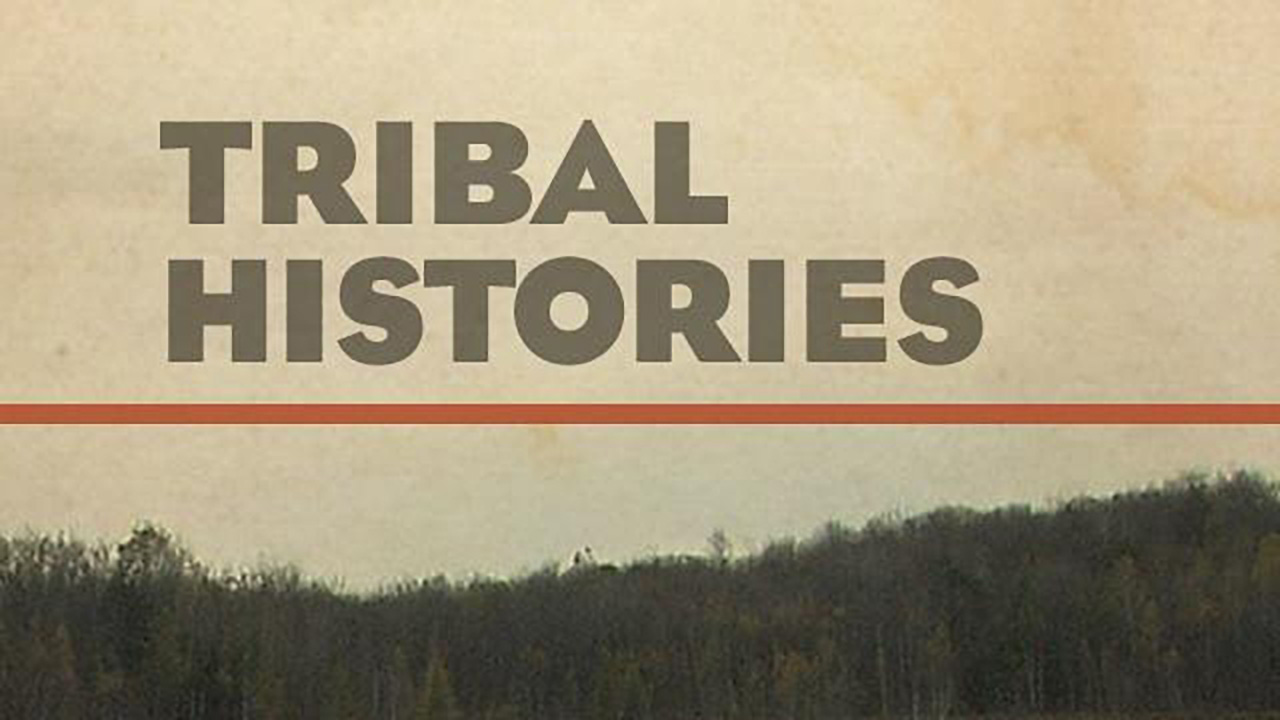
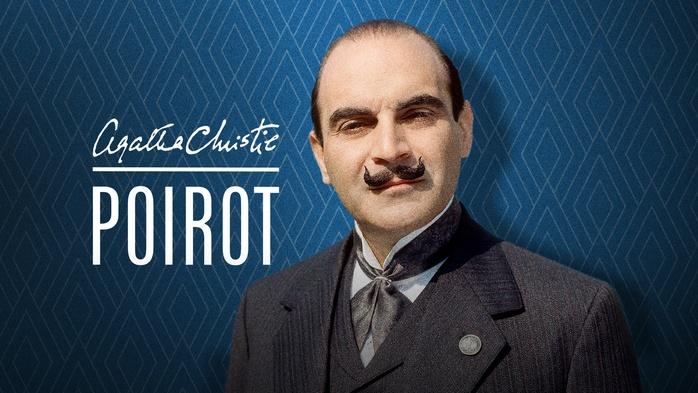




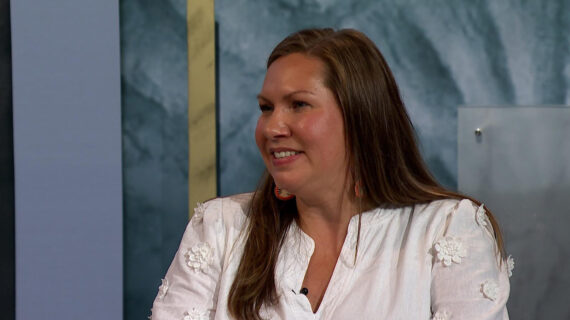
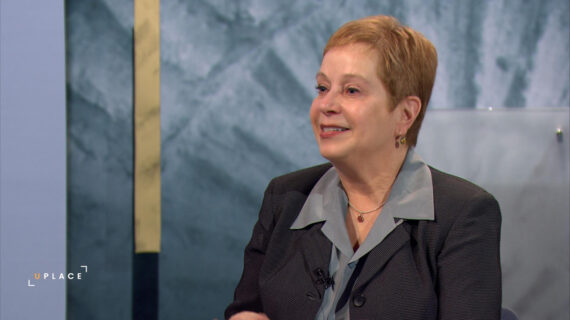
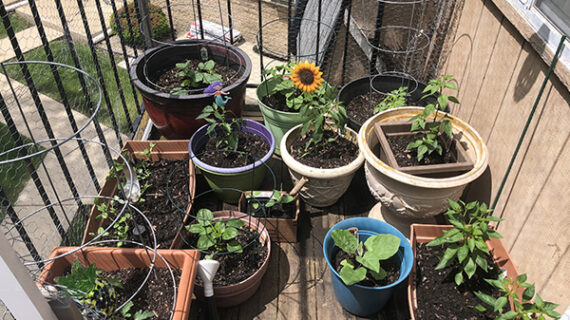
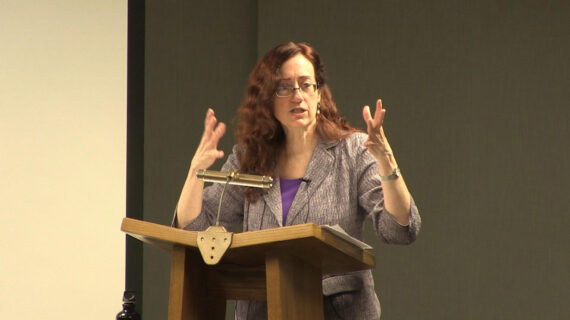
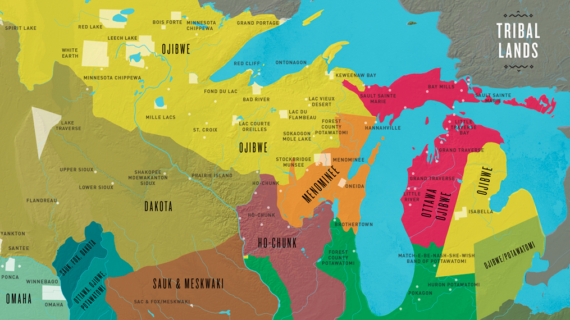
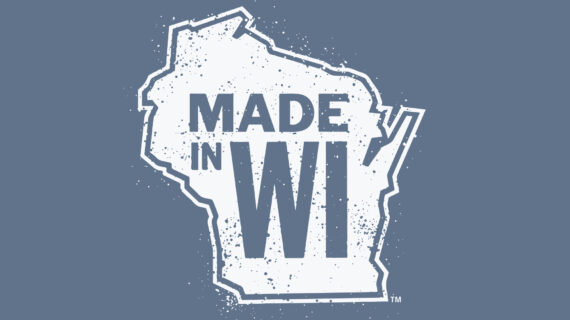
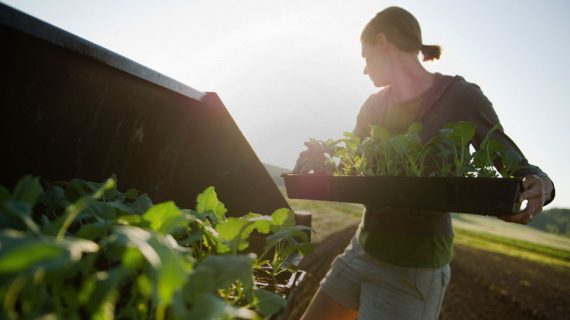
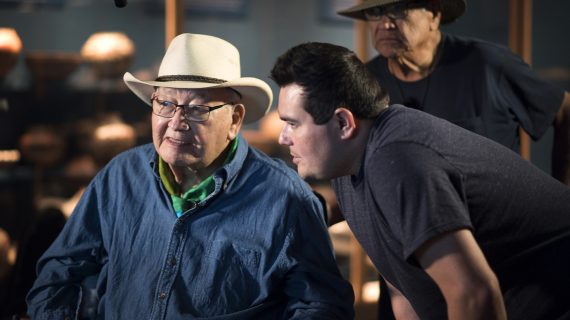


Follow Us